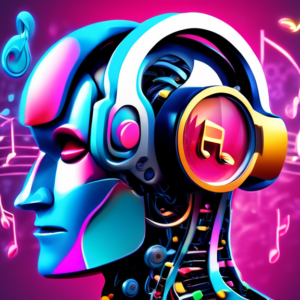YouTube Employs AI to Target Copyrighted Music, Avoiding Full Video Silencing
In the vast digital landscape of YouTube, where billions of hours of video content are consumed daily, the clash between creative expression and copyright protection is a constant battle. Creators often use copyrighted music to enhance their videos, sometimes unknowingly infringing on intellectual property rights. This has led to frustration on both sides, with copyright holders seeking to protect their work and creators facing video takedowns or muting.
The Challenge of Music Copyright on YouTube
Music copyright is a complex beast, especially in the online world. When a song is created, several rights are associated with it, including:
- **Master Rights:** Owned by the entity that recorded the music (typically a record label).
- **Composition Rights:** Owned by the songwriters and their publishers.
Using copyrighted music without permission can trigger copyright strikes on YouTube, leading to:
- **Video Muting:** Portions of the video containing the copyrighted music are silenced.
- **Video Blocking:** The entire video becomes unavailable for viewing.
- **Channel Strikes:** Multiple strikes can lead to channel termination.
YouTube’s Content ID system has been the primary tool for copyright management. It scans uploaded videos, comparing them against a database of copyrighted material. While effective, Content ID has faced criticism for its occasional inaccuracies and its tendency to favor copyright holders, sometimes flagging content that falls under fair use.
The Evolution Towards AI-Powered Copyright Solutions
Recognizing the need for a more nuanced approach, YouTube has been increasingly turning to artificial intelligence (AI) to improve music copyright management. This shift aims to:
- **Enhance Accuracy:** AI can be trained to better identify copyrighted music, even in complex audio mixes.
- **Improve Fairness:** AI can learn to distinguish between copyright infringement and legitimate uses, such as fair use cases.
- **Offer More Options:** AI-powered solutions can go beyond simply muting or blocking videos, offering alternative solutions that benefit both creators and copyright holders.
YouTube’s AI-Driven Approach to Music Copyright
YouTube’s AI now plays a key role in several aspects of music copyright management:
1. More Precise Content Identification
Advanced AI algorithms are used to analyze audio with greater precision. These algorithms can:
- Identify music that’s been edited, remixed, or used in the background.
- Recognize variations in tempo, pitch, and instrumentation.
- Distinguish between similar-sounding tracks.
This enhanced accuracy reduces the likelihood of false positives, ensuring that only genuine copyright infringements are flagged.
2. Contextual Understanding and Fair Use
AI is being trained to understand the context in which music is used. This involves:
- Analyzing the video’s purpose (e.g., educational, commentary, parody).
- Considering the amount of copyrighted material used.
- Evaluating the effect of the use on the market value of the copyrighted work.
By considering these factors, AI can help determine if a particular use falls under fair use guidelines, potentially avoiding unnecessary restrictions on creators.
3. Revenue Sharing Models
In many cases, YouTube’s AI identifies copyrighted music and, instead of muting or blocking the video, implements a revenue-sharing model. This means:
- Creators can still use the copyrighted music in their videos.
- Copyright holders receive a share of the advertising revenue generated by the video.
This approach benefits both parties: creators can enhance their content with popular music, while copyright holders are compensated for the use of their work.
4. Improved Transparency and Control
YouTube is providing creators with more transparency regarding copyright claims. AI-powered tools can:
- Pinpoint the exact segment of a video where copyrighted content is detected.
- Offer various options to creators, such as muting the audio, replacing the music, or disputing the claim.
- Provide creators with data on the performance of their videos with copyrighted content.
The Benefits of AI for Music Copyright on YouTube
The adoption of AI-powered solutions for music copyright management on YouTube offers several benefits:
1. A More Balanced Ecosystem
AI helps strike a fairer balance between protecting the rights of copyright holders and fostering a vibrant creative community.
2. Enhanced User Experience
Fewer videos are muted or blocked due to inaccurate copyright claims, resulting in a more enjoyable viewing experience.
3. Increased Revenue Opportunities
Revenue-sharing models enable creators to monetize their videos even when using copyrighted music, while copyright holders can generate revenue from a wider range of content.
4. Improved Efficiency and Scalability
AI automates many aspects of copyright management, freeing up human reviewers to focus on more complex cases. This makes the system more efficient and scalable, essential given the massive volume of content uploaded to YouTube daily.
The Future of Music Copyright and AI
AI’s role in managing music copyright on YouTube is still evolving. As AI technology advances, we can anticipate:
- **Even greater accuracy and nuance in copyright detection.**
- **More sophisticated revenue-sharing models tailored to different types of content and usage.**
- **Proactive tools that guide creators on copyright-related issues before they upload their videos.**
AI has the potential to transform music copyright management, creating a fairer, more efficient, and more rewarding system for both creators and copyright holders. As YouTube and other platforms continue to invest in AI-powered solutions, we can expect a future where creativity and copyright can coexist harmoniously in the digital age.
